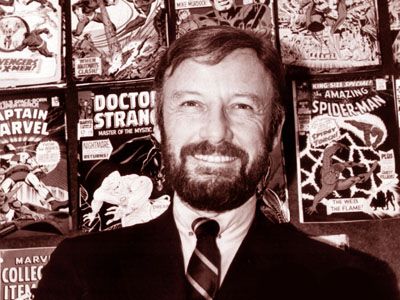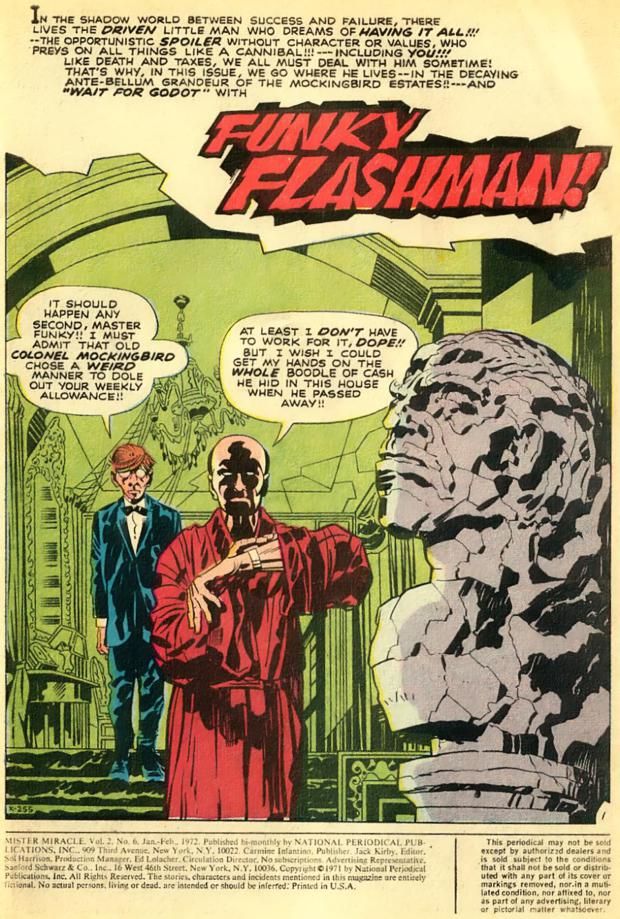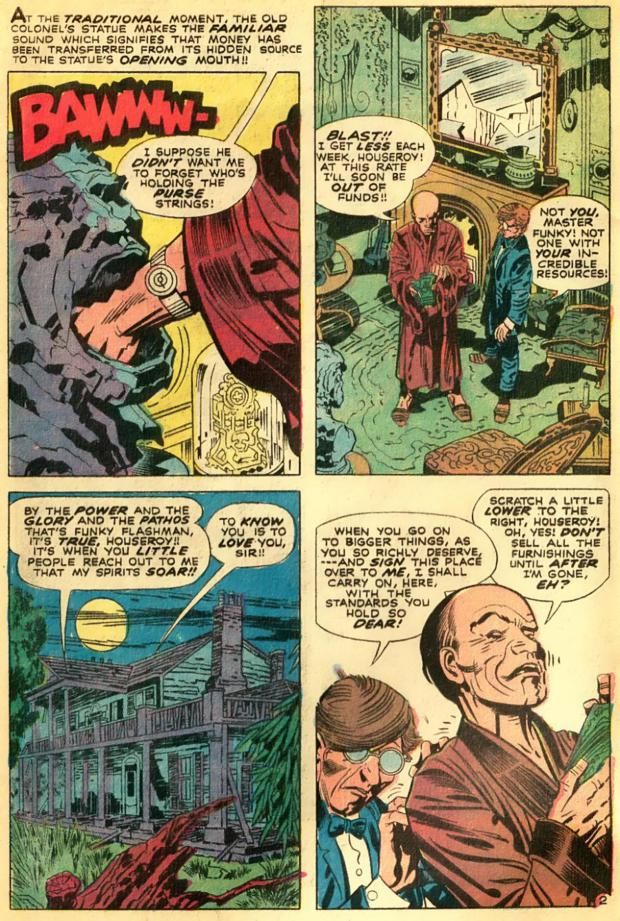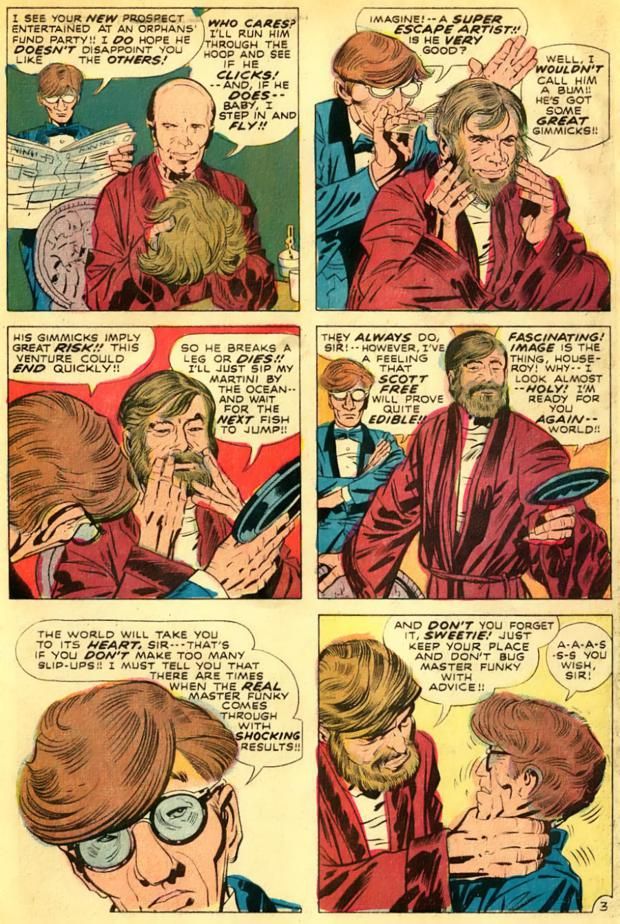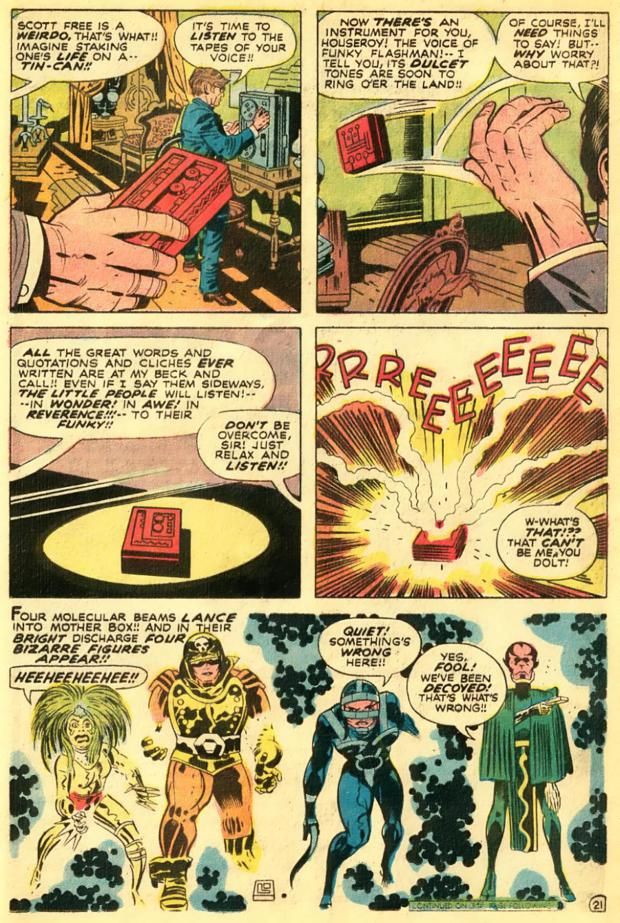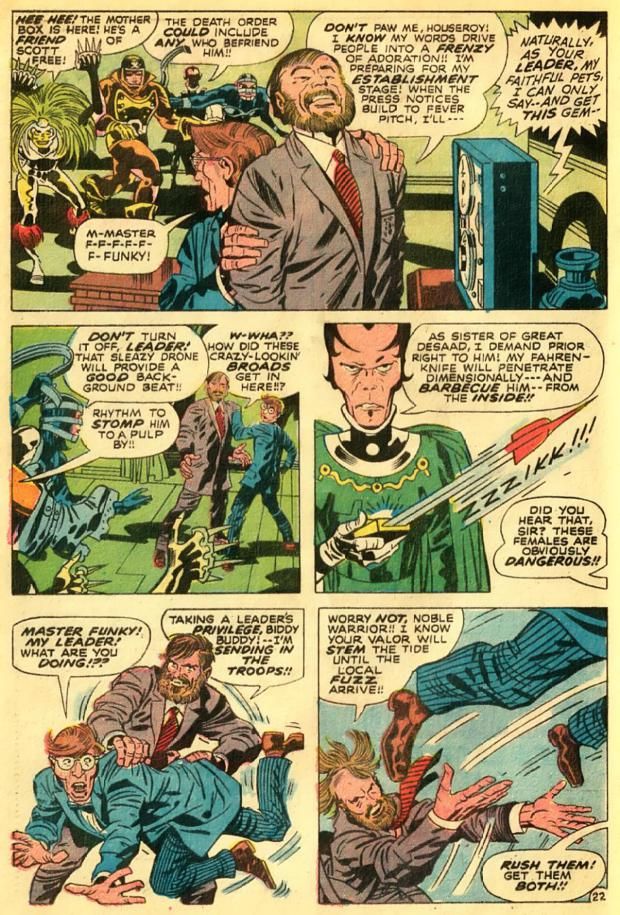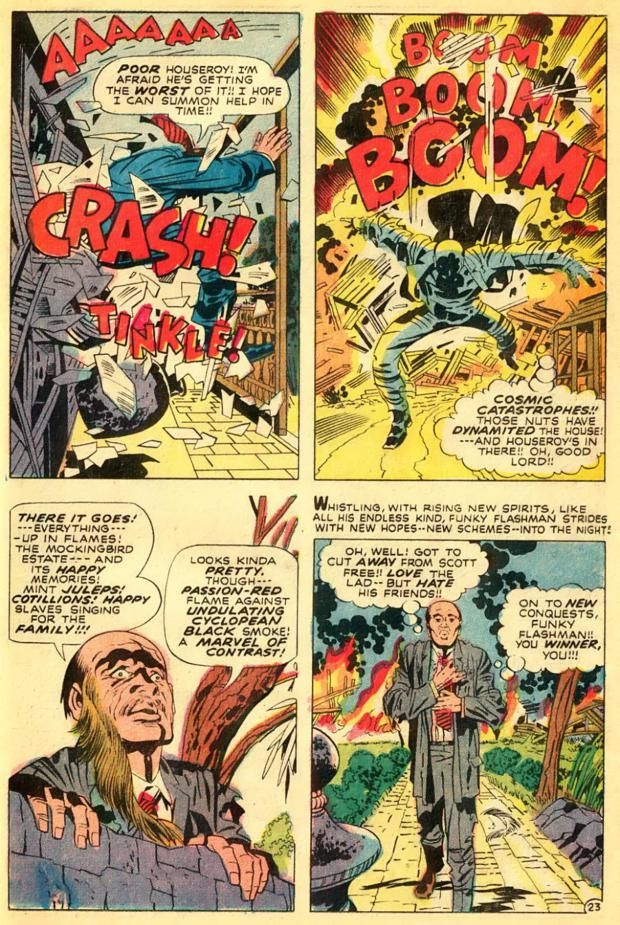In this feature I explore the context behind (using reader danjack's term) "meta-messages." A meta-message is where a comic book creator comments on/references the work of another comic book/comic book creator (or sometimes even themselves) in their comic. Each time around, I'll give you the context behind one such "meta-message." Here is an archive of the past installments!
Today we take a look at a famous example of Jack Kirby taking out some of his frustrations with his time at Marvel Comics with a satiric look at his old company in the pages of Mister Miracle #6.
As you likely know by now, Jack Kirby left Marvel Comics in 1970 after working for Marvel on a pretty much exclusive basis for over a decade. Kirby had grown frustrated with Marvel for a number of reasons, with one of the major reasons being what he felt to be a lack of appreciation for the impact that he had on the "Marvel Age" of comics (both in terms of credit and financial compensation). He was irritated with how much credit Marvel Editor-in-Chief Stan Lee took (and was given by the mainstream media) for the creation of characters that Kirby had created with Lee, such as the Fantastic Four, the Hulk and the X-Men. Moreover, while Kirby was certainly paid well in general (at least compared to other comic book artists of the time), he felt he was routinely promised more from Marvel publisher Martin Goodman and Goodman just as routinely reneged on said promises (this was the exact scenario that led to Kirby leaving Marvel decades earlier when it was called Timely Comics. Goodman promised Kirby and Joe Simon a certain percentage of the sales of their creation, Captain America, and reneged on the promise. Kirby and Simon then signed with DC Comics). So when Goodman presented him with a new contract in 1970 that required Kirby to specifically sign away certain legal rights, Kirby had had enough and he moved to DC Comics, which had been wooing him for a couple of years. Kirby ended up working for DC for five years. His most notable work there was the so-called "Fourth World" saga, a series of inter-connected titles all concerning a brand new race of "New Gods," some good and some evil. The story took place in a trilogy of titles: New Gods, Forever People and Mister Miracle.
In Mister Miracle #6 (Mister Miracle was a New God who escaped to Earth and became a famous escape artist. His past kept catching up with him, though, as the evil New Gods kept trying to re-capture him), Kirby invented a new villain to face Mister Miracle that also gave Kirby the opportunity to really stick it to his old company. Check out the introduction of Funky Flashman...
As you can see, Kirby depicts Marvel Comics as a former slave plantation. Lee is depicted as a money-hungry man living off of the whims off Marvel publisher Martin Goodman and whose best skills appear to be using other people while distracting people into thinking he's adding something important of value. This comic came out in late 1971, which was an interesting time at Marvel. Goodman had sold the company in 1968 but was still working there as the publisher, but it seemed like it was only a matter of time that he'd leave (Goodman finally left in 1973) and Lee, meanwhile, was also primed for a move (presumably to publisher, which is exactly what he did). Roy Thomas, in turn, seemed poised to become the next Marvel Editor-in-Chief. The oddest insult here to me is of Roy Thomas, who is depicted as Stan Lee's bootlicker, which is pretty weird since I don't recall of any problems between Kirby and Thomas while at Marvel, so the harsh take on Thomas seems kind of, well, mean. Of course, you could argue the entire thing is too mean, but at least with Lee there was a legitimate conflict between Kirby and Lee at the time. I don't recall any such conflict between Kirby and Thomas.
Later in the issue, Funky signs Mister Miracle and he does what he does best, talk...
Ultimately, Funky has a hold of Mister Miracle's Mother Box, which was being used to summon the Female Furies to attack. They attack at "Mockingbird Estates" and Funky shows his true colors...
A "Marvel" of contrast indeed.
Here's a picture of Lee from the time period, by the way, in case you want to see how on point the caricature was...

